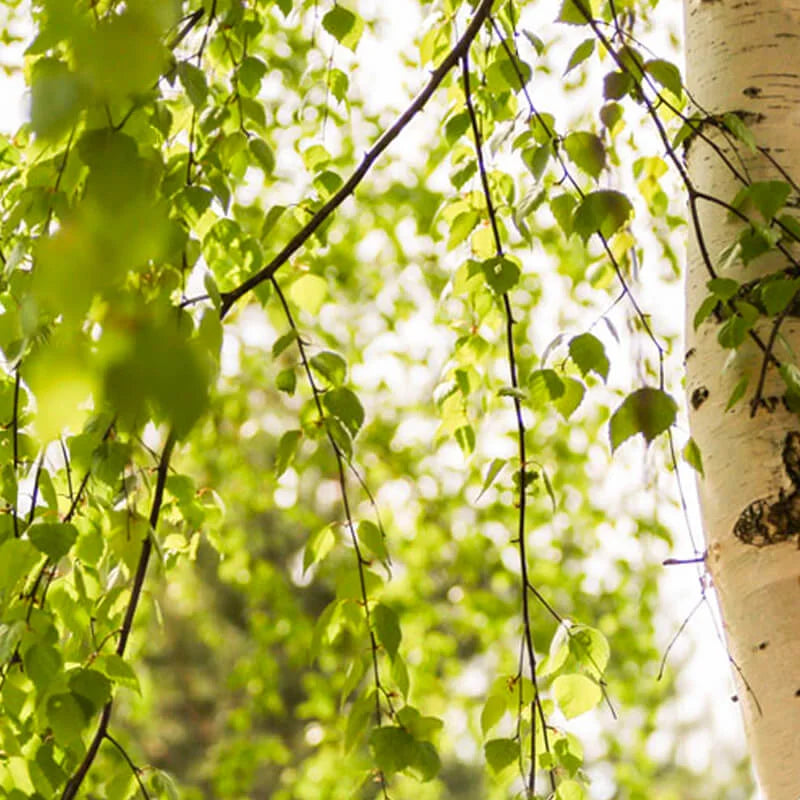Birch leaves have been used in Europe for centuries in the healthy support of urine flow1,* healthy kidney and liver functions, and to help the body flush out toxins with the urine, birch leaves are also a powerful antioxidant1.*
The positive effects of birch leaf extract are primarily due to its rich chemical composition, which includes polyphenols like flavonoids, tannins, and terpenes.
Polyphenols in birch leaves have antioxidant activity2,* support the cleansing systems of the body, kidney and liver functions and helping the body to flush out toxins with the urine1.*
Flavonoids are one of the most characteristic chemical compounds in birch leaves1.*
They are present in plants both in a bound state with a saccharide residue (glycosides) and in unbound forms (aglycones).
They maintain a healthy UT by different mechanisms, including interaction with cell membranes, cell organelles, and cell energy metabolism3.*
Tannins are another type of polymeric phenolic compound that have the ability to naturally tan hides and precipitate gelatin. Found in almost every part of the plant, their molecular weight varies between 500 and 30004.* An important fact about tannins is that they have the ability to form hydrophobic, hydrogen, and covalent bonds with proteins from the cell wall and cell membrane of microorganisms5.*
Terpenes are part of the essential oils of plants and have an isoprene structure. Chemical and spectroscopic dammarane triterpenes have been identified in birch leaves6.*
Scientific articles reveal the powerful antioxidant properties of the tetracyclic triterpenes from dammarane type in birch leaves7.*
The beneficial effects of terpenes, tannins and flavonoids in maintaining a healthy urinary system have been documented in a number of clinical studies1.*
- EMA EMA. Assessment Report on Betula Pendula Roth and / or Betula Pubescens Ehrh . as Well as Hybrids of Both Species , Folium. Vol 44.; 2015. http://www.ema.europa.eu/docs/en_GB/document_library/Herbal_- _HMPC_assessment_report/2015/03/WC500184280.pdf.
- Azman NAM, Skowyra M, Muhammad K, Gallego MG, Almajano MP. Evaluation of the antioxidant activity of Betula pendula leaves extract and its effects on model foods. Pharm Biol. 2017;55(1):912-919. doi:10.1080/13880209.2017.1282528
- Kumar S, Pandey AK. ScientificWorldJournal. 2013;2013:162750. doi:10.1155/2013/162750
- Singh A, Kumar S. In: ; 2019. doi:10.5772/intechopen.85984
- Gupta A, Pandey AK. In: Egbuna C, Kumar S, Ifemeje JC, Ezzat SM, Kaliyaperumal SBT-P as LC for NDD, eds. Elsevier; 2020:275-292. doi:https://doi.org/10.1016/B978-0-12-817890-4.00018-4
- Makhnev A, Degtyarev E, Migalina S. Contemp Probl Ecol. 2012;5. doi:10.1134/S1995425512020096
- Ghiulai R, Roşca OJ, Antal DS, et al. Molecules. 2020;25(23). doi:10.3390/molecules25235557







